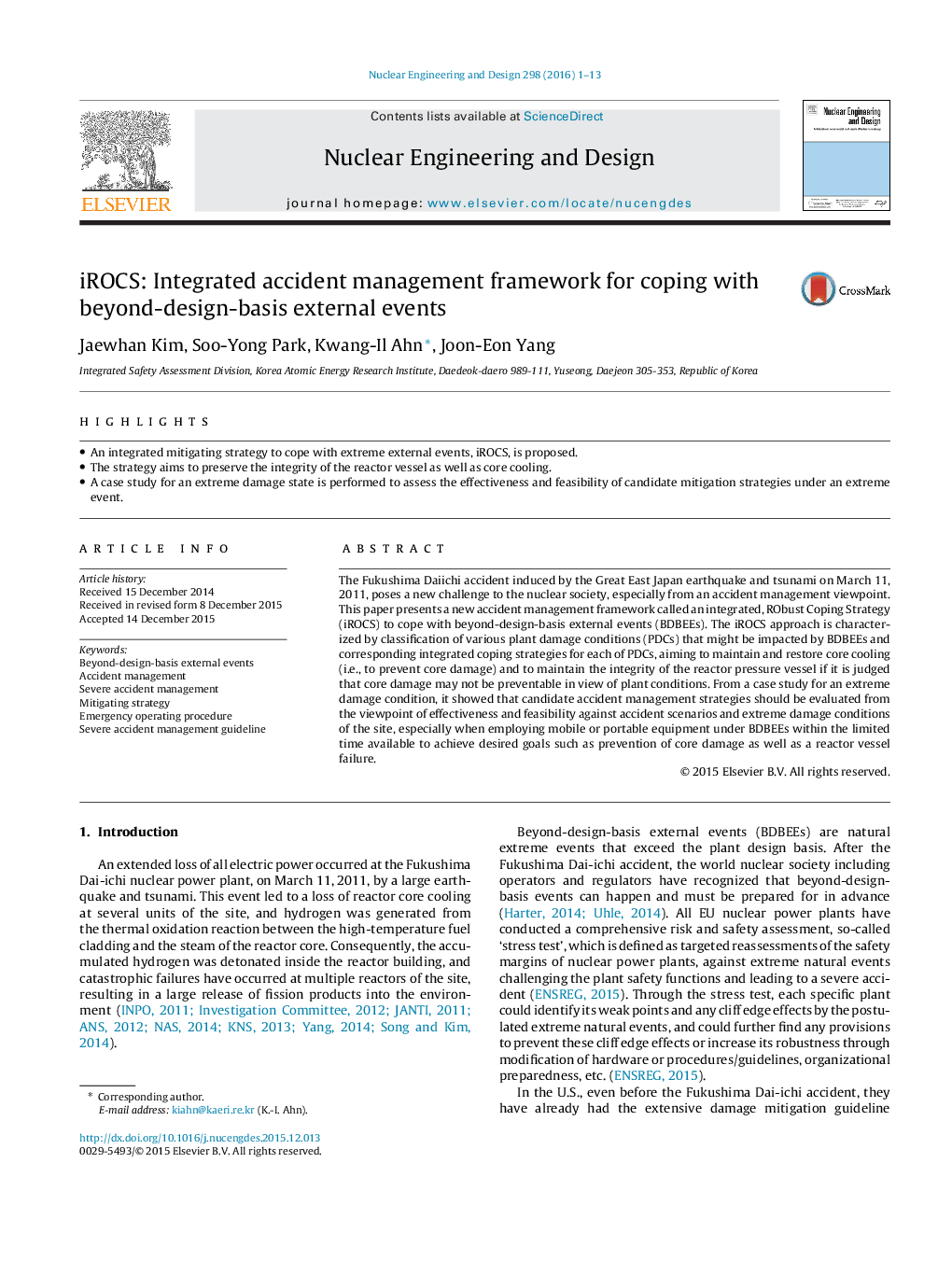| Article ID | Journal | Published Year | Pages | File Type |
|---|---|---|---|---|
| 6760190 | Nuclear Engineering and Design | 2016 | 13 Pages |
Abstract
The Fukushima Daiichi accident induced by the Great East Japan earthquake and tsunami on March 11, 2011, poses a new challenge to the nuclear society, especially from an accident management viewpoint. This paper presents a new accident management framework called an integrated, RObust Coping Strategy (iROCS) to cope with beyond-design-basis external events (BDBEEs). The iROCS approach is characterized by classification of various plant damage conditions (PDCs) that might be impacted by BDBEEs and corresponding integrated coping strategies for each of PDCs, aiming to maintain and restore core cooling (i.e., to prevent core damage) and to maintain the integrity of the reactor pressure vessel if it is judged that core damage may not be preventable in view of plant conditions. From a case study for an extreme damage condition, it showed that candidate accident management strategies should be evaluated from the viewpoint of effectiveness and feasibility against accident scenarios and extreme damage conditions of the site, especially when employing mobile or portable equipment under BDBEEs within the limited time available to achieve desired goals such as prevention of core damage as well as a reactor vessel failure.
Related Topics
Physical Sciences and Engineering
Energy
Energy Engineering and Power Technology
Authors
Jaewhan Kim, Soo-Yong Park, Kwang-Il Ahn, Joon-Eon Yang,
